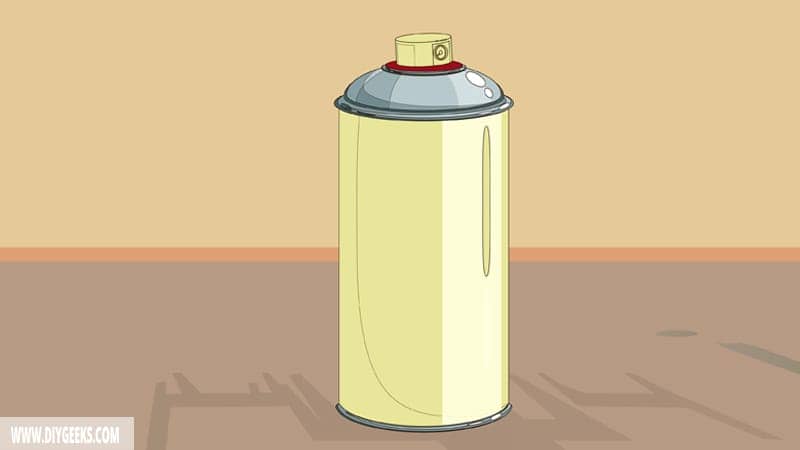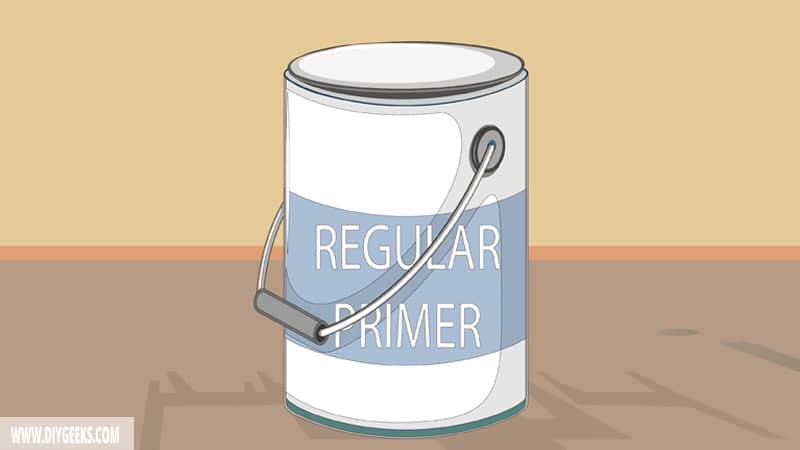Self-etching primer is used for metal, automotive, and surfaces where paint adhesion is a challenge. Regular primer is an undercoat applied to surfaces to enhance paint adhesion.
Self-etching primers adhere to bare and aluminum surfaces better, are easier to apply, and have better rust-resistant qualities than regular primers. Regular primers dry faster and can be used for all surface types.
What is a Self-Etching Primer?

Self-etching primer is a primer type used for metal and automotive surfaces. It uses a chemical reaction to etch (or corrode) a bare metal surface and adhere over it.
Self-etching primer is used over bare metal or aluminum surfaces where regular primer can’t adhere and paint adhesion is a challenge. It’s not used for regular porous surfaces where paint adhesion isn’t a challenge.
What is Regular Primer?

Regular primer is a preparatory coating applied to surfaces to enhance paint penetration and adhesion. It creates a smooth layer that covers the surface imperfections, prevents the surface’s existing color shade to bleed through, and allows new paint to penetrate and adhere to it.
Most regular primers come in white or grey color shades, but there are some tinted primer types too. They come in two formula types; water-based and oil-based primers.
Use regular primer if you want to apply a porous surface, such as wood or concrete. It creates a smooth layer over it that prevents paint over-absorption and enhances paint adhesion.
Some regular primer types, such as stain-blocking primers, create a moisture-resistant layer that prevents water and stains from bleeding through the paint finish.
Regular vs Self-Etching Primer
The differences between regular and self-etching primers are listed below.
Formula
The regular primer formula contains solvents, binders, and synthetic resins without extra additives. Its key ingredient is the binders that give primer good surface adhesion.
Self-etching primer formula contains more additives and phosphoric acid that etches the bare metal surfaces and enhances paint adhesion.
Dry Time
Regular primer dries faster than self-etching primer as it has fewer additives. Regular primer takes around 1-2 hours to dry enough before painting while self-etching primer takes around 3-5 hours.
Surface Type
Regular primers are used for painted or sealed surfaces, or surfaces where adhesion isn’t a challenge.
Self-etching primers are used for bare metal or aluminum surfaces where paint adhesion is a challenge. It etches and adheres to the metal surface, enhancing paint adhesion.
Ideal Paint Type
You can apply all paint types over regular primers. You can apply only automotive and metal paints over self-etching primers.
Application
Self-etching primers are easier to apply than regular primers as they come in a spray can and require one (1) coat only.
Most regular primers are harder to apply as they come in a container, must be applied with a paintbrush or sprayer, you need 2-3 coats of it, and can reveal brush marks.
Rust Prevention
Self-etching primers have better rust-prevention qualities than regular primers because they adhere to the metal surface and create a moisture-resistant coating.
Related Read: Water-Based Primer vs Oil-Based Primer?


